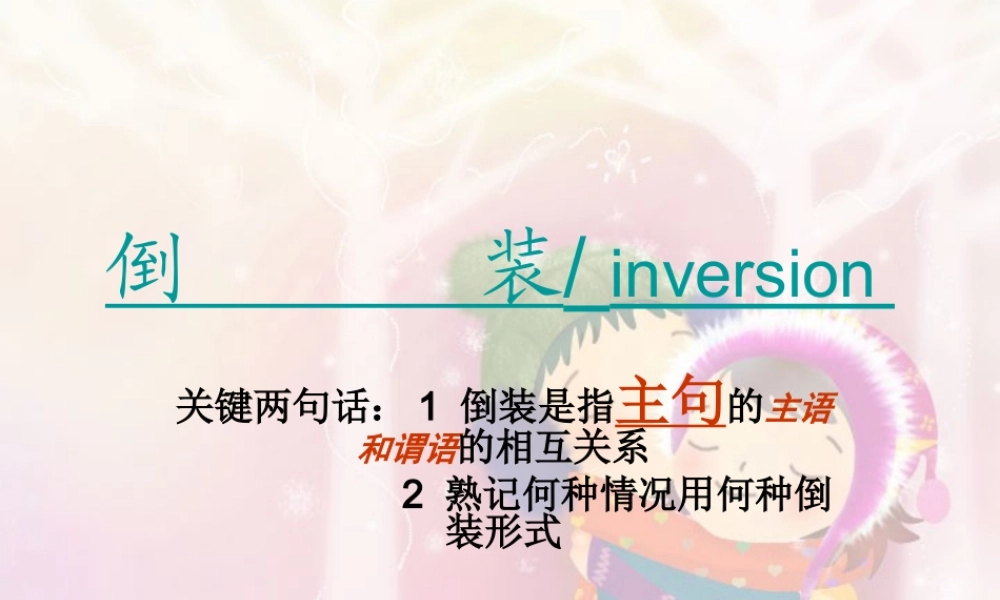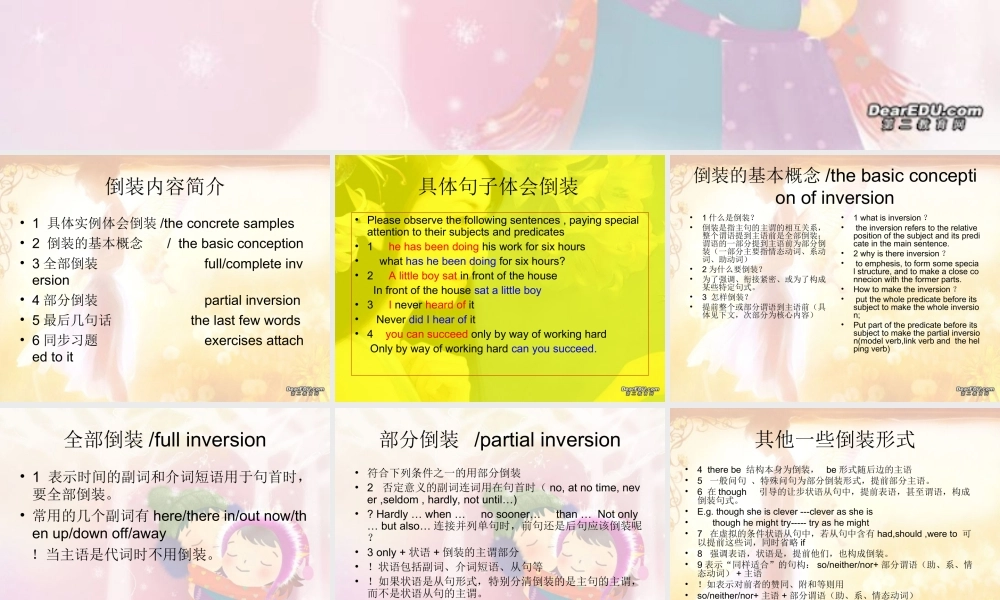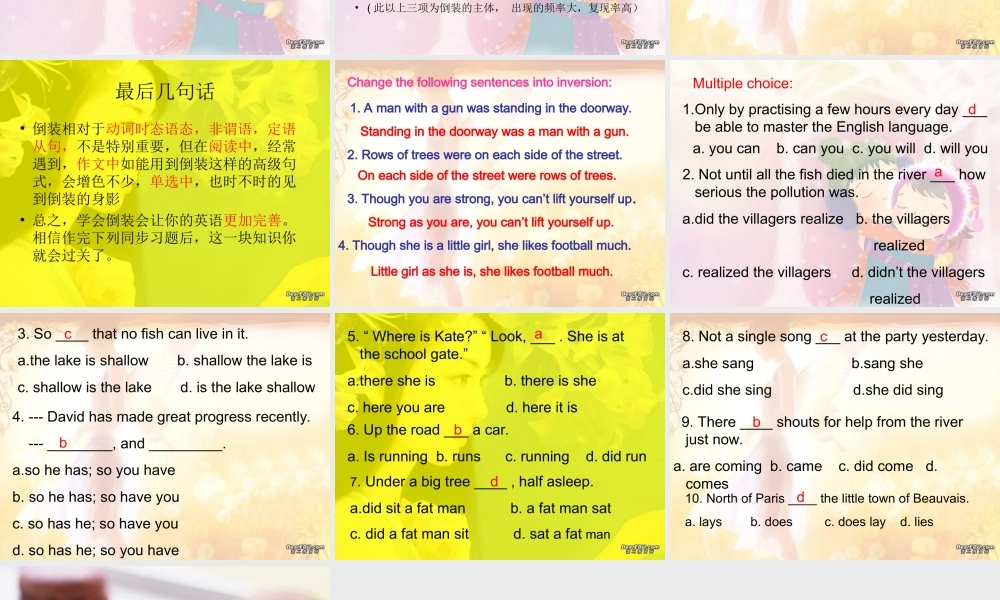倒 装/ inversion 关键两句话: 1 倒装是指主句的主语和谓语的相互关系 2 熟记何种情况用何种倒装形式倒装内容简介• 1 具体实例体会倒装 /the concrete samples• 2 倒装的基本概念 / the basic conception• 3 全部倒装 full/complete inversion• 4 部分倒装 partial inversion• 5 最后几句话 the last few words• 6 同步习题 exercises attached to it具体句子体会倒装• Please observe the following sentences , paying special attention to their subjects and predicates• 1 he has been doing his work for six hours• what has he been doing for six hours?• 2 A little boy sat in front of the house In front of the house sat a little boy• 3 I never heard of it • Never did I hear of it • 4 you can succeed only by way of working hard Only by way of working hard can you succeed.倒装的基本概念 /the basic conception of inversion•1 什么是倒装?•倒装是指主句的主谓的相互关系,整个谓语提到主语前是全部倒装;谓语的一部分提到主语前为部分倒装(一部分主要指情态动词、系动词、助动词)•2 为什么要倒装? •为了强调、衔接紧密、或为了构成某些特定句式。•3 怎样倒装?•提前整个或部分谓语到主语前(具体见下文,次部分为核心内容)•1 what is inversion ?• the inversion refers to the relative position of the subject and its predicate in the main sentence.•2 why is there inversion ?• to emphesis, to form some special structure, and to make a close connecion with the former parts.•How to make the inversion ?• put the whole predicate before its subject to make the whole inversion;•Put part of the predicate before its subject to make the partial inversion(model verb,link verb and the helping verb)全部倒装 /full inversion• 1 表示时间的副词和介词短语用于句首时,要全部倒装。• 常用的几个副词有 here/there in/out now/then up/down off/away !当主语是代词时不用倒装。部分倒装 /partial inversion• ...



